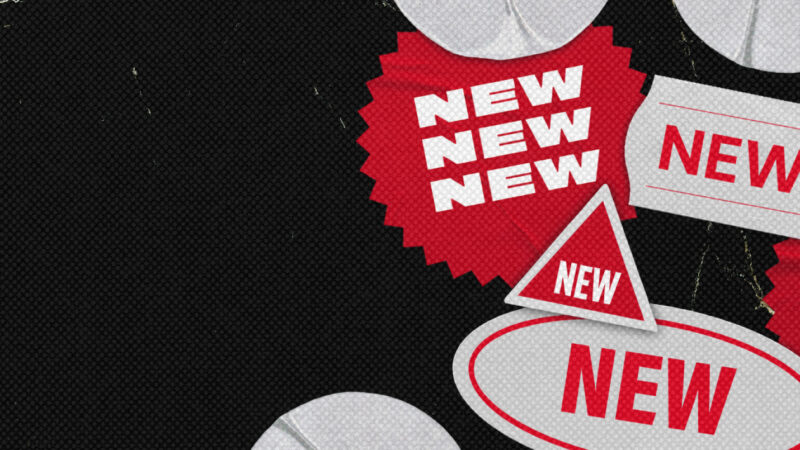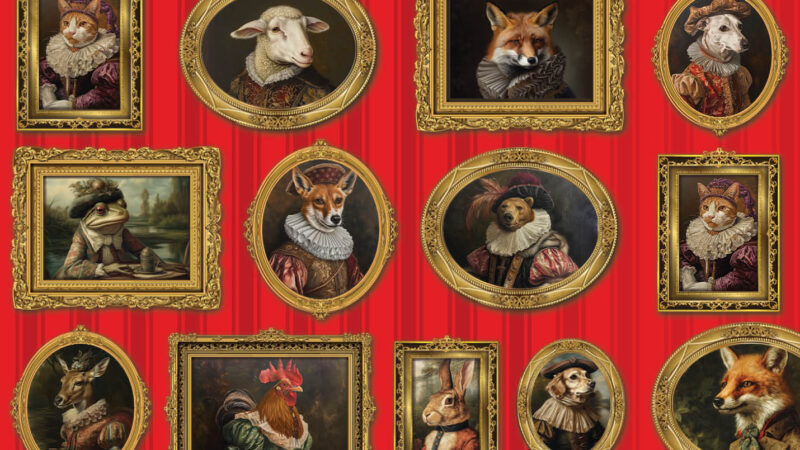B2B is obsessed with newness – but older products make all the money. What's gone wrong?

Every B2B marketer loves big-budget, multi-channel product launches.
Product launches require every team in the agency to come together as one. Late nights. Fractious meetings. Crossed fingers.
Product launches are exciting. They’re dramatic. They win awards and they make careers.
Unfortunately, as thrilling (and lucrative) as they are for B2B agencies, pricey launches of shiny new products are rarely the revenue-exploders that the businesses themselves hope they’ll be.
Yes, an entirely new product will always get a bit of short-term attention. But for most B2B companies, the vast majority of revenue will continue to come in from older, established products. And in a couple of months, that shiny new doodad that you spent six figures launching across multiple channels, audiences and personas will be just another product in the catalogue.
So why do we all focusing so much time, effort and budget on newness and novelty?
Your back catalogue is the real breadwinner
Numbers don’t lie, so let’s get into some.
According to a 2023 McKinsey report, 75% of the average business’s revenues come from existing products, rather than new launches. In addition: “80% of the value creation achieved by the world’s most successful growth companies comes from their core business” – in other words, getting current customers to buy more of the same.
Despite this, new product and service launches (alongside new customer acquisition) remain the key focus for most B2B marketers. And according to Deloitte’s CMO Survey, this obsession with newness is on an upward curve, with 260 CMOs reporting an average 37% increase in marketing spend on product launches last year.
This wouldn’t be such a head-scratcher if new products consistently sold well. But the fact is, they often don’t.
According to Harvard Business School’s Professor Clayton Christensen, around 95% of new product launches fail to meet the targets set for them. Even global mega-corporations aren’t immune to flops: remember Google Glass? Microsoft’s Zune? Amazon’s Fire Phone?
All of which means we’re throwing baskets of money at the riskiest part of the portfolio, while underinvesting in the stuff that keeps the lights on.
Why? Because sales teams want something fresh to push; marketers want a buzzy new campaign to work on; department heads want to appear innovative to the board; and the board wants something sparkly to show the shareholders.
This fevered company-wide mindset leads to what Marketing Week has described as “B2B’s product delusion” – the false belief that growth can only come from continually dazzling audiences with all-new features and specs, rather than steadily building long-term brand equity.
And so solid, proven products are inadvertently sidelined in favour of pricey launches that often go nowhere.
Marketing older products isn’t lazy
Reinvesting in your existing product range is more than a defensive move. It’s a high-ROI, low-risk strategy that bolsters both your revenue and your brand.
It tells your customers that you’re in it for the long haul. It gives sales teams tools to re-engage familiar buyers. And it shows the market that your core offer is still 100% relevant.
It also gives you a platform for some attention-grabbing storytelling. Think assets that showcase your product evolutions, long-term successes, business milestones and customer numbers. It all helps to build a brand that feels lived-in and credible.
Heritage campaigns work across all sectors. Nike continues to drive billions in revenue from decades-old product lines such as the Air Jordan 1 and Air Max 90, which it markets as authentic icons with modern relevance.
Guinness keeps its flagship product front-and-centre while modernising its brand experience, demonstrating that a focus on an ‘old’ product doesn’t have to mean tired, olde-tymey marketing.
Caterpillar, meanwhile, is currently leaning into its 100-year anniversary, reinforcing its longstanding brand credibility to construction and engineering buyers. While the Caterpillar range is obviously far more advanced now than it was 100 years ago, the brand has looked fondly backwards by issuing special editions of its products in ‘Centennial Grey’ – rather than the iconic ‘Caterpillar Yellow’ – to mirror the colour of its first machines.
Obviously, we’re not suggesting you abandon developing or marketing new products. Your current range may be fantastic, but – unless you’re the B2B equivalent of Guinness – it will start to date eventually. Like sharks, brands need to keep moving to stay alive.
As with all things B2B, it’s all about striking the right balance.
And here’s the thing: build a loyal customer base around your existing product range, and when it is time to launch something new, they’ll be extra-receptive: research shows buyers are 50% more likely to try out a new product from a brand they’re already purchasing from (source: Forbes).
How to show older products some marketing love
- Dig deep into the story behind a product. You can build heritage campaigns around anything from product milestones to industry impact. If you can source some behind-the-scenes assets – original design sketches etc – share those with your audience.
- Show, don’t tell. Case studies and testimonials from long-term users can carry more weight than snappy slogans or lists of specs.
- Showcase your product’s evolution, and connect the dots for your audience. Timelines and ‘then and now’ visuals can help to place old products in a new light.
- Embrace nostalgia, where relevant and appropriate. It’s not about banging on about ‘the good old days’. It’s about reconnecting with what drew people to your product in the first place.
- Celebrate consistency! Products that have been around for a while should be heralded for their staying power, not tucked away in the back pages of catalogues. Hundreds of similar products will have failed to match yours for longevity – so what is it about yours that makes customers keep coming back to it?
You don’t need to have something new to have something to say. The products your customers trust – the ones they already buy, specify or recommend – are often your strongest brand assets. And in a market full of noise and endless Shiny New Things, consistency is its own kind of competitive edge.
So go ahead: launch that exciting innovation. Just don’t forget the products that really make your brand what it is.
Looking to give your brand’s back catalogue the attention it deserves? Get in touch – let’s talk.
A newsletter actually worth reading
We dislike spam as much as you do. So we promise to only grace your inbox when we’ve got something valuable to say.


